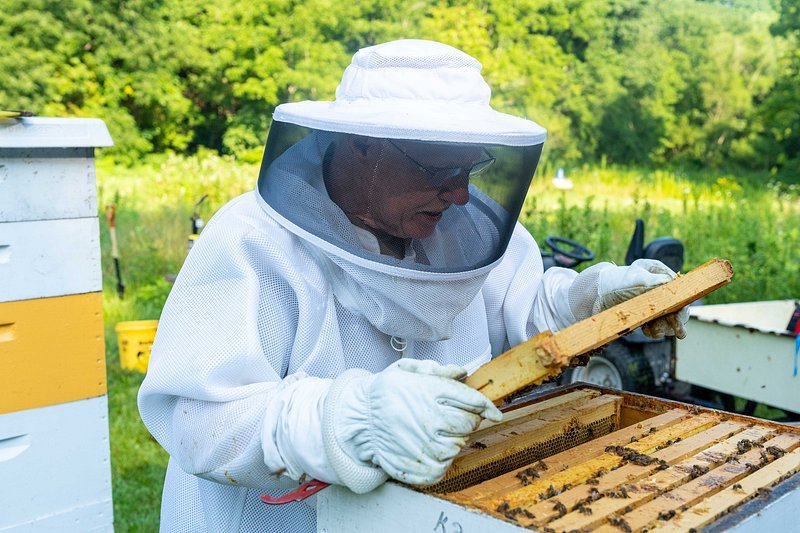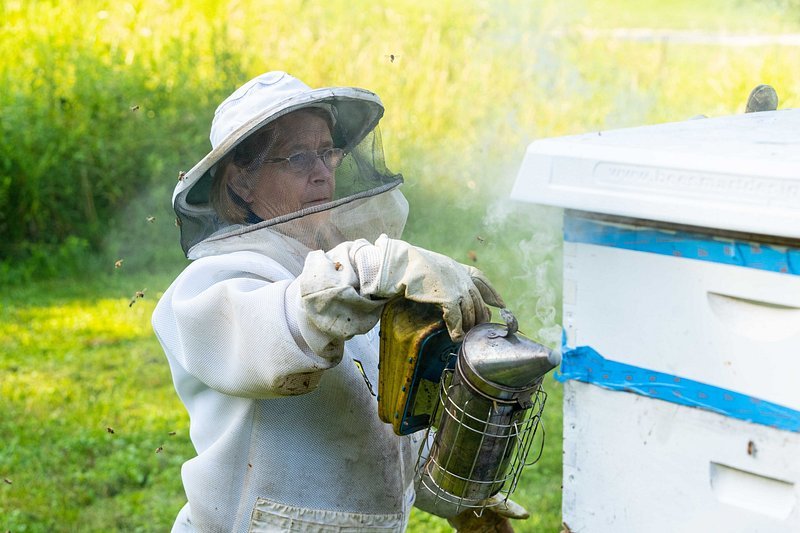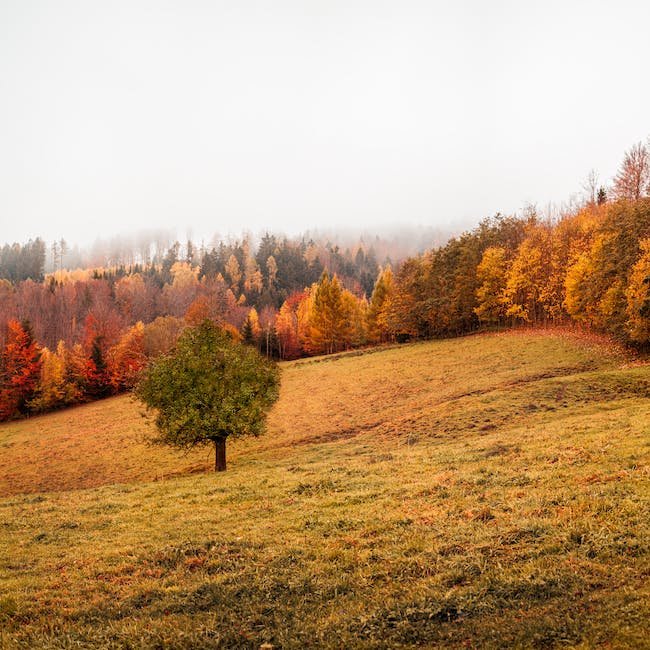As the seasons change, so do the sights, sounds, and smells of our surroundings. And amidst the ever-shifting symphony of nature, there is a humble creature diligently working its magic to sustain the delicate balance of our ecosystems: the honeybee. While their buzzing wings may go unnoticed by many, the role these tiny creatures play in our world is truly awe-inspiring. In the realm of sustainability, seasonal beekeeping stands as an essential practice that not only supports the survival of these marvelous insects but also safeguards the intricately woven tapestry of life on our planet. From the vibrant blossoms of spring to the crisp air of autumn, let us embark on a journey to unravel the significance of seasonal beekeeping in preserving the harmony of our environment.
Table of Contents
- Embracing Seasonal Beekeeping for Ecological Balance
- Understanding the Impact of Seasonal Beekeeping on Pollination
- Key Practices and Strategies for Successful Seasonal Beekeeping
- Ensuring Long-Term Sustainability through Seasonal Beekeeping
- Supporting Local Ecosystems through Seasonal Beekeeping
- Q&A
- To Conclude

Embracing Seasonal Beekeeping for Ecological Balance
Beekeeping is not only a labor of love; it is an essential practice for maintaining ecological balance. Embracing seasonal beekeeping can greatly contribute to the sustainability of our ecosystems, as honeybees play a crucial role in pollinating a vast variety of plants, including many of our food crops.
By working in harmony with the natural rhythms of the seasons, beekeepers can maximize the health and productivity of their hives. Each season brings unique challenges and opportunities that savvy beekeepers can leverage to ensure the well-being of their buzzing residents and the overall ecological balance. Here are some important considerations for seasonal beekeeping:
- Spring: As the blossoms emerge, so does the bees’ need for expansion. Beekeepers should monitor hive populations, ensuring enough space is provided for the growing colonies. Spring also brings an abundance of nectar and pollen, allowing bees to build up their strength after the winter months.
- Summer: The warm summer months offer a prime time for honey production. Beekeepers can focus on maintaining hive health, managing potential pest issues, and assisting in hive ventilation to prevent overheating. During this season, it’s crucial to keep an eye on the honey supers, harvesting the excess honey when conditions are optimal.
- Fall: As the temperatures drop and floral resources become scarce, beekeepers prepare their colonies for the upcoming winter. Providing the bees with ample food stores, such as honey or sugar syrup, becomes essential for their survival during the colder months. Fall is also an ideal time for beekeepers to conduct hive inspections and perform necessary maintenance.
- Winter: With the arrival of winter, colonies enter a period of relative dormancy. Beekeepers must ensure the hives are adequately insulated and protected from harsh weather conditions. Regular check-ups are necessary to monitor hive weight, consumption of stored food, and overall colony health.
Embracing seasonal beekeeping not only allows us to nurture healthy bee populations but also celebrates the intricate dance between humans and nature. By caring for bees throughout the seasons, we contribute to the preservation of our fragile ecosystems and ensure a bountiful future for both these remarkable insects and ourselves.

Understanding the Impact of Seasonal Beekeeping on Pollination
Exploring the intricate relationship between seasonal beekeeping and pollination reveals the significant impact these practices have on the environment. Bees, nature’s diligent pollinators, play a paramount role in sustaining our ecosystems and fostering the growth of diverse flora. By understanding the nuances of seasonal beekeeping, we can further appreciate the vital contribution these buzzing creatures make to our world.
1. Enhanced Plant Diversity: Seasonal beekeeping optimizes pollination by strategically placing hives amidst flowering plants. This symbiotic partnership between bees and flora results in increased flowering and plant diversity, enriching landscapes with vibrant colors and fragrances.
2. Nutritional Benefits: The butterflies in our stomachs owe a debt of gratitude to bees. With their diligent pollination efforts, bees foster the growth of fruits, vegetables, and nuts that grace our tables. Moreover, their role in cross-pollination helps plants produce larger and more nutrient-dense crops.
3. Thriving Ecosystems: Through pollination, bees contribute to the sustainability of numerous ecosystems. Indigenous insects and wildlife heavily rely on the trees, shrubs, and flowers that depend on bee pollination for their survival. By supporting biodiversity, seasonal beekeeping ensures the harmony and health of entire ecosystems.

Key Practices and Strategies for Successful Seasonal Beekeeping
Beekeeping is a rewarding and fascinating hobby that requires careful planning and dedication. Whether you are a beginner or an experienced beekeeper, here are some key practices and strategies to ensure success in your seasonal beekeeping endeavors:
- Regular hive inspections: Conducting regular hive inspections allows you to monitor the health of your bee colonies and identify any potential issues early on. During inspections, check for signs of disease, pests, or other abnormalities. This proactive approach can help prevent the spread of diseases and ensure the overall well-being of your bees.
- Proper hive management: Bees are highly sensitive creatures, so it’s crucial to provide them with a suitable environment. Make sure your hives are well-ventilated, protected from extreme weather conditions, and equipped with appropriate frames and foundation. Regularly clean and maintain your hives to promote healthy bee populations.
- Seasonal nectar flow planning: Nectar availability varies throughout the seasons, influencing the growth and productivity of your bee colonies. Research and understand the flowering patterns and nectar flows in your area. By knowing the timing of natural nectar sources, you can strategically plan hive expansions, honey extraction, and supplementary feeding to ensure your bees have an adequate food supply.
- Pest and disease management: Protecting your bee colonies from pests and diseases is crucial for their survival. Implement integrated pest management techniques, such as regular mite monitoring and honey bee disease prevention strategies. Be proactive in identifying, treating, and preventing infestations or infections to maintain healthy and thriving colonies.
- Continued education and networking: Beekeeping is an ever-evolving field, and staying informed about new research, techniques, and industry trends is essential. Attend beekeeper association meetings, workshops, and conferences to expand your knowledge and connect with fellow beekeepers. Engaging in continuous learning and networking can help you enhance your beekeeping practices and stay ahead of challenges.
By employing these key practices and strategies, you can ensure the success and well-being of your bee colonies throughout the seasons. Remember, successful beekeeping requires patience, observation, and a commitment to providing the best possible care for your buzzing friends.
Ensuring Long-Term Sustainability through Seasonal Beekeeping
One of the key factors in maintaining the long-term sustainability of beekeeping operations is adopting a seasonal approach. By understanding and working with the natural cycles and needs of honeybees, beekeepers can create an environment that promotes the health and productivity of their colonies.
1. Tending to bee nutritional needs: Ensuring a diverse and ample supply of nectar and pollen throughout the seasons is vital for the well-being of honeybees. Planting a variety of flowering plants that bloom at different times can provide a continuous food source for bees. Additionally, supplementing their diet with sugar water or pollen patties during lean periods can help sustain them during times of scarcity.
2. Monitoring and controlling for pests and diseases: Regular monitoring for common bee pests and diseases is crucial for maintaining the long-term health of bee colonies. Implementing natural pest and disease control methods, such as integrated pest management (IPM) techniques, can help minimize the use of chemical treatments and reduce the risk of developing resistance.
3. Providing suitable hive conditions: Honeybees’ needs vary throughout the seasons, and beekeepers must adjust hive conditions accordingly. For example, during winter, insulating the hive and reducing entrance size can help protect bees from cold temperatures. In the summer, providing ample ventilation and shade can help prevent overheating. Creating a comfortable and suitable environment for bees is essential for their survival and thriving.
By adopting these practices and understanding the dynamics of each season, beekeepers can ensure the long-term sustainability of their operations. Maintaining healthy colonies not only benefits the bees but also contributes to the pollination of crops and the overall health of our ecosystems.
Supporting Local Ecosystems through Seasonal Beekeeping
is not only a rewarding hobby but also a vital step towards preserving our environment and promoting biodiversity. By carefully managing beehives in accordance with the changing seasons, beekeepers can help ensure a healthy ecosystem for both bees and other native species.
One of the key benefits of seasonal beekeeping is the symbiotic relationship between bees and plants. Bees are crucial pollinators, responsible for the fertilization of numerous plants and crops. By providing a well-maintained habitat for bees throughout the year, beekeepers not only nurture the bee population but also contribute to the growth and health of the local flora. This, in turn, enhances the broader ecosystem by supporting various insects, birds, and wildlife that rely on these plants for food and shelter.
Moreover, seasonal beekeeping allows for the adoption of sustainable practices that benefit the environment. Beekeepers can strategically position their hives near specific plant species to maximize pollination efficiency. This targeted approach not only ensures the survival of endangered or vulnerable plants but also helps maintain the balance of local ecosystems. Additionally, implementing integrated pest management techniques, such as using natural predators or organic solutions, reduces the need for harmful chemical interventions, keeping the environment safe and preserving biodiversity.
- By , we can:
- Contribute to the preservation of native plant species and enhance biodiversity.
- Promote sustainable practices and reduce the use of harmful chemicals.
- Ensure a stable and abundant food source for bees and other pollinators.
- Protect and support the broader ecosystem by maintaining a healthy and diverse habitat.
Seasonal beekeeping is a proactive approach that empowers individuals to play a crucial role in conserving our natural environment. By fostering the well-being of bees, we are actively contributing to the strength and resilience of ecosystems, while reaping the benefits of increased pollination and a more sustainable future.
Q&A
Why is seasonal beekeeping crucial for sustainability?
Seasonal beekeeping is essential for sustainability because it allows bees to follow their natural lifecycle and maintains a healthy balance in the ecosystem. By aligning beekeeping practices with the changing seasons, beekeepers support the overall health and stability of both the bees and the environment.
How does seasonal beekeeping benefit the bees?
Seasonal beekeeping provides bees with a suitable environment and conditions that promote their well-being. It ensures they have access to an adequate supply of food, proper temperature regulation, and appropriate pest control, allowing them to thrive and fulfill their vital pollination role.
What role do bees play in maintaining a sustainable ecosystem?
Bees are crucial pollinators, contributing to the reproduction of both wild and cultivated plants. Their pollination services support biodiversity, ensure the production of fruits, vegetables, and nuts, and help sustain the food chain for countless other species. By keeping bees healthy through seasonal beekeeping, we foster a more sustainable ecosystem.
Can seasonal beekeeping impact honey production?
Seasonal beekeeping has a direct effect on honey production. By carefully timing honey extraction based on the bees’ natural lifecycle, beekeepers allow the bees to store enough honey for their own needs before harvesting any surplus. This ensures the bees have enough food to survive the colder months, supporting their long-term health.
How does seasonal beekeeping contribute to sustainable agriculture?
Seasonal beekeeping is indispensable for sustainable agriculture because it enhances crop production through effective pollination. As bees transfer pollen from one flower to another, they enable the fertilization process necessary for the growth of crops. By actively engaging in seasonal beekeeping, farmers ensure an abundant harvest and reduce the need for pollination alternatives.
What are the environmental benefits of seasonal beekeeping?
Seasonal beekeeping positively impacts the environment in various ways. By promoting healthy bee populations, it helps maintain a balanced ecosystem by aiding in the pollination of plants, which leads to improved biodiversity. Additionally, increased pollination enhances carbon sequestration, contributing to the fight against climate change.
To Conclude
As we drift away from the buzzing meadows and honeyed memories, it becomes evident that embracing seasonal beekeeping is not just a mere hobby, but an emerald thread weaving through the tapestry of sustainability. The enchanting dance between bees and blooms captures not only Mother Nature’s symphony but also the delicate equilibrium necessary for our planet’s prosperity.
With ethereal precision, the art of seasonal beekeeping reminds us that nature, like a well-choreographed ballet, thrives on rhythm and harmony. The bees, tirelessly flitting from flower to flower, acting as extraordinary pollinators, flourish within this seasonal symphony. An essential piece of the puzzle, their tireless efforts account for almost 80% of the world’s pollination needs, ultimately ensuring our plates overflow with vibrant produce and bountiful harvests.
When we embrace seasonal beekeeping, we transcend the realms of nurturing our environment and become guardians of sustainability. The subtle yet powerful ripple effect caused by each smoky puff and gentle hive inspection extends far beyond the buzzing apiaries nestled on the hillsides. It cascades through the interconnected web of life, nourishing flora, fauna, and fellow creatures who share our planet’s majestic abundance.
But this harmonious tale is not simply one of an idyllic relationship between bees and blossoms. It is a testament to the intricate balance that keeps our ecological heritage intact. By tending to the hives with seasonal sensitivity, we allow the bees the respite they seek during colder months, ensuring their survival and well-being. In return, they reward us with golden nectar, the elixir of sweetness and sustenance that graces our tables, elevates our recipes, and ignites our taste buds with unmatched delight.
Ultimately, the importance of seasonal beekeeping for sustainability goes far beyond the fragrant wafts of honey and the golden streams that tease our palates. It transcends borders and cultures, whispering a message of unity and collective responsibility. It sparks a desire within us to tread lightly upon this Earth, gently safeguarding the delicate ecosystems that sustain us all.
So, let us step forward, hand in hand, understanding that our humble guardianship of bees – these enchanting pollinators - holds the key to a future that blossoms with resplendent hues. Together, we can weave an everlasting tapestry of sustainable harmony, where the dance between bees, blooms, and mankind reverberates for generations to come.
As an affiliate, my content may feature links to products I personally use and recommend. By taking action, like subscribing or making a purchase, you’ll be supporting my work and fueling my taco cravings at the same time. Win-win, right?
Want to read more? Check out our Affiliate Disclosure page.